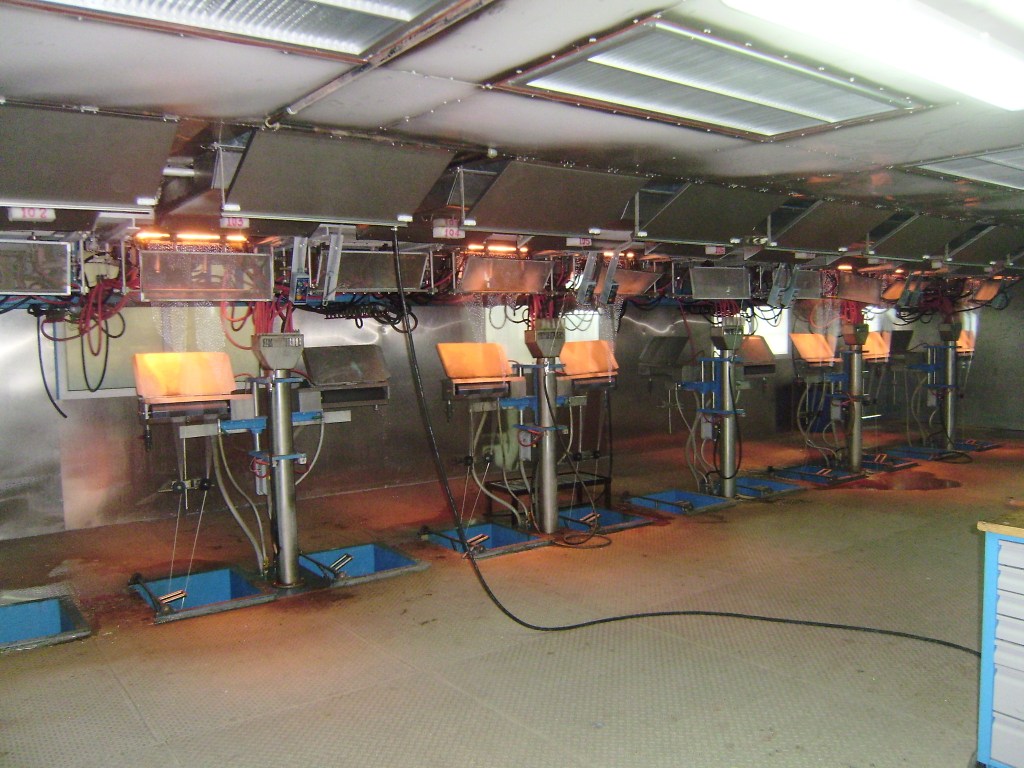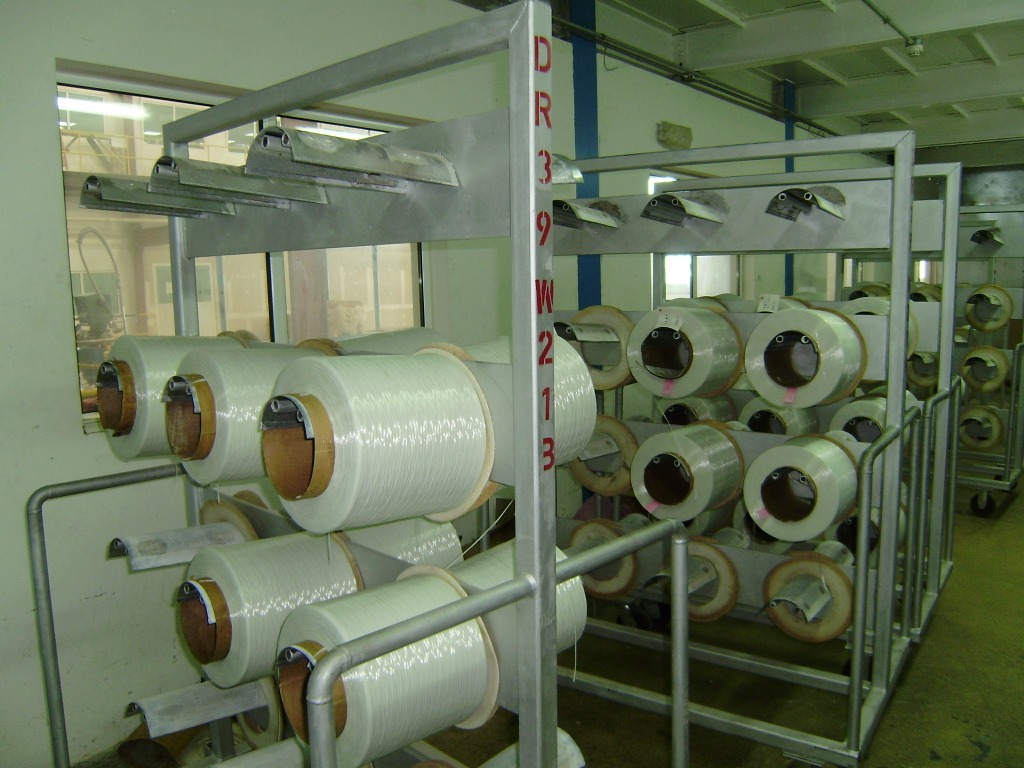GLASS STRAND INC.
SUPPLIER of TECHNOLOGY, ENGINEERING and EQUIPMENT to the GLASS INDUSTRY
|
GLASS STRAND INC. SUPPLIER of TECHNOLOGY, ENGINEERING and EQUIPMENT to the GLASS INDUSTRY
|
|
FIBER FORMING - BUSHING The bushing is rectangular shaped platinum alloy box with a large top opening and a multiplicity of orifices or tips in the base. The bushing is electrically heated and the bushing acts as a “thermal valve” and accurately controls the flow of glass through it over a long period of time. Thermocouples attached to the bushing send a control signal to a PID controller, which then controls a SCR Power Pack used to regulate the supply voltage to a highly turned down special water cooled transformer. Large copper buss bars and clamps complete the circuit between the transformer and bushing. From the economic point of view, it is desirable to flow as much glass as possible through the tips and convert efficiently to fiber. From the technical point of view, the draw-down ratio should be kept as low as possible for optimum stability of the process. The bushing should operate with the smallest orifice, which at the highest temperature possible consistent with stable conditions will give the desired throughput. In practice this is limited by the rate at which the surface of the glass cones will cool. GSI designs bushings and the supporting hardware and also uses McCormick & Associates for custom designs.
 Fiber Forming Systems:
|

|